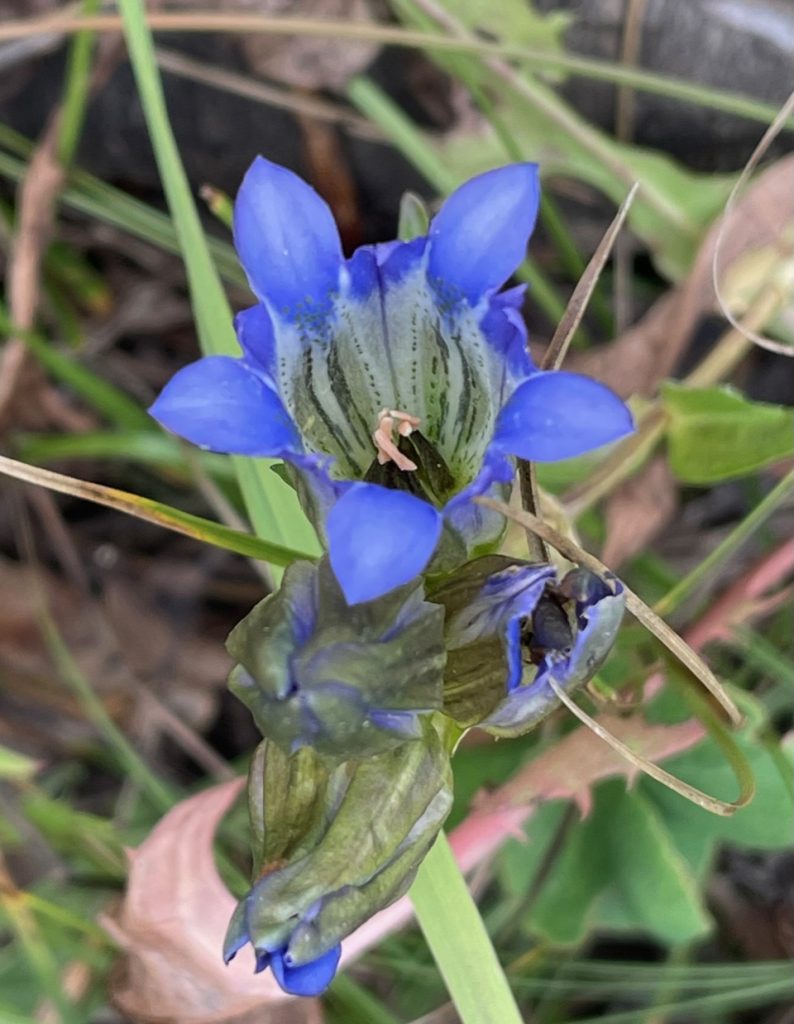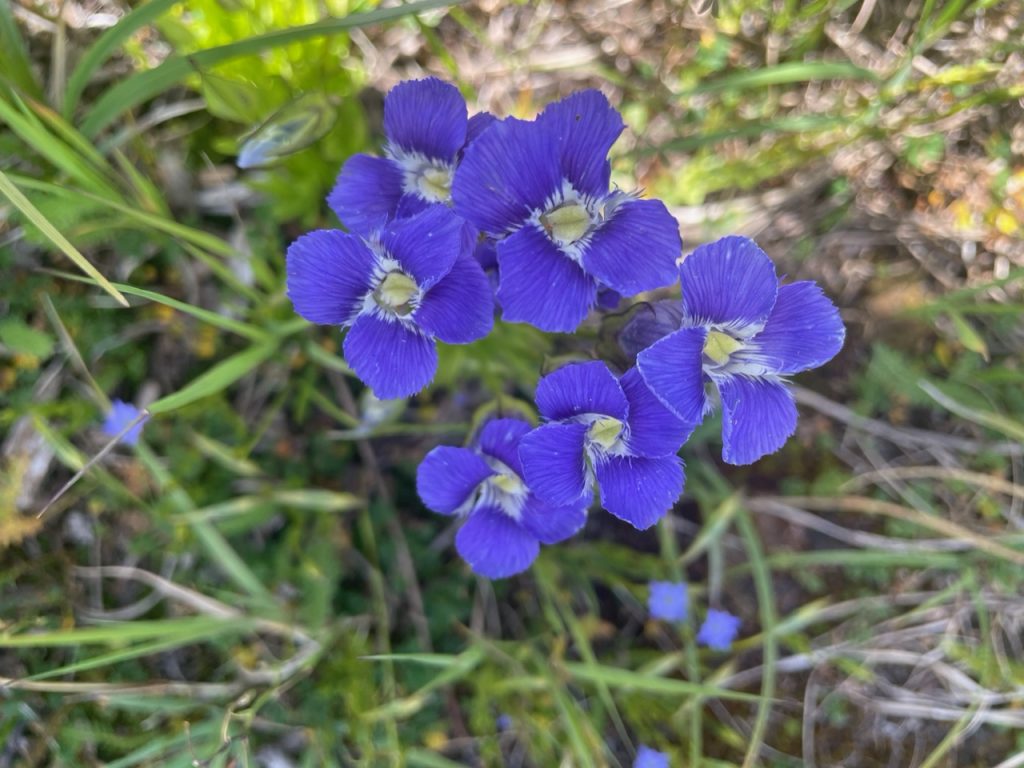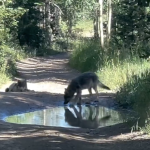Get Wild: Glories of the summer’s end
Get Wild

Karn Stiegelmeier/Get Wild
This summer has been amazingly wet and green, which is exactly what we want for many reasons, a great wildflower season among them. The regular afternoon rains create excellent conditions for most flowers, and even for the end of the summer flowers — the gentians! Gentians are in the Gentianaceae family, which includes some of our richest colors and most fabulous shapes. In our sub-Alpine and tundra wet zones, you may get to see the many purple-to-lavender and rose-colored gentians: purple star gentian, Swertia perennis, bottle gentian, Gentiana parryi, blue fringed gentian, Gentianopsis detonsa, rose gentian, Gentianella amarella, moss gentian, Gentiana prostate and the tiny Lapland gentian (Gentiana tenella). Each of these beautiful flowers have unique petal shapes.
Gentians are seen in our high mountains at the end of the summer season in Summit County. Different species of gentians are well-known in the European high mountains, and can be found blooming earlier in the summer at the Betty Ford Alpine Gardens in Vail. They grow on every continent except Antarctica, and take on many different forms in different locations, usually preferring wet locations next to creeks or wetlands. Like many plants, gentians were used historically for a variety of medicinal uses, especially in European areas. The botanical genus came from Gentius, a second-century B.C. king of Illyria, who supposedly introduced its use in healing. However, gentian was an ingredient in medicines described on an Egyptian papyrus dating back to 1200 B.C. It was used for digestive problems and as a topical wound healer.
The bottle gentian, Gentiana parryi, also called Parry’s gentian, named for Charles Parry, the explorer/botanist who traveled in Colorado and the West in the mid 1800s, spending summers in a cabin at the base of Grays and Torreys peaks, collecting botanical specimens. He named the peaks Grays and Torreys after other botanists he worked with at the time. It is fun to watch as these these beautiful and bizarre bottle-shaped blooms are sought after by nature’s specialized pollinators. The bottles are deep and often closed bottle shapes, so it takes a specialized pollinator to get the job done right. The bumblebee somehow knows instinctively just the right spot to touch at the tip of the bloom to open the “trap door” and dive deep into the bloom, hidden while it gathers a reward. Hummingbirds have no difficulty inserting their long bills into the flower.

Fringed gentian is one to take a close up view to appreciate the elegant lacy fringes along the edge of the deep blue petals. Like most gentians, they will remain closed with shady or rainy conditions, and reliably open up with the sun shining.
The purple star gentian is exactly that — many gorgeous star-pointed purple stars, and these star flowers open wider, and even in the shade, unlike the other gentians, that are rather shy and commonly closed without bright sun.
The Lapland gentian is not common here in Summit County, but can be found at high elevations and is easily identified by having only basal leaves (leaves that grow lowest on the stem of a plant or flower) and stems only up to 2 inches tall. This species is circumpolar in the Northern Hemisphere.

Perhaps the most spectacular of our gentians, is the Arctic gentian, Gentiana algidag. Reliably, it is the last one to bloom and represents the final days of summer. Therefore, it’s sometimes known as the boo-hoo gentian. White, like the Arctic, with some tiny purplish-blue stripes, and reliably hidden or closed without the sun shining, it is a stunning treasure. The beauty of the Arctic gentian is always bittersweet, because it means summer is truly ending soon.

“Get Wild” publishes on Fridays in the Summit Daily News. Karn Stiegelmeier is the chair of Eagle-Summit Wilderness Alliance, an all-volunteer nonprofit that helps the U.S. Forest Service protect and preserve the wilderness areas in Eagle and Summit counties. For more information, visit EagleSummitWilderness.org.

Support Local Journalism

Support Local Journalism
As a Summit Daily News reader, you make our work possible.
Summit Daily is embarking on a multiyear project to digitize its archives going back to 1989 and make them available to the public in partnership with the Colorado Historic Newspapers Collection. The full project is expected to cost about $165,000. All donations made in 2023 will go directly toward this project.
Every contribution, no matter the size, will make a difference.









